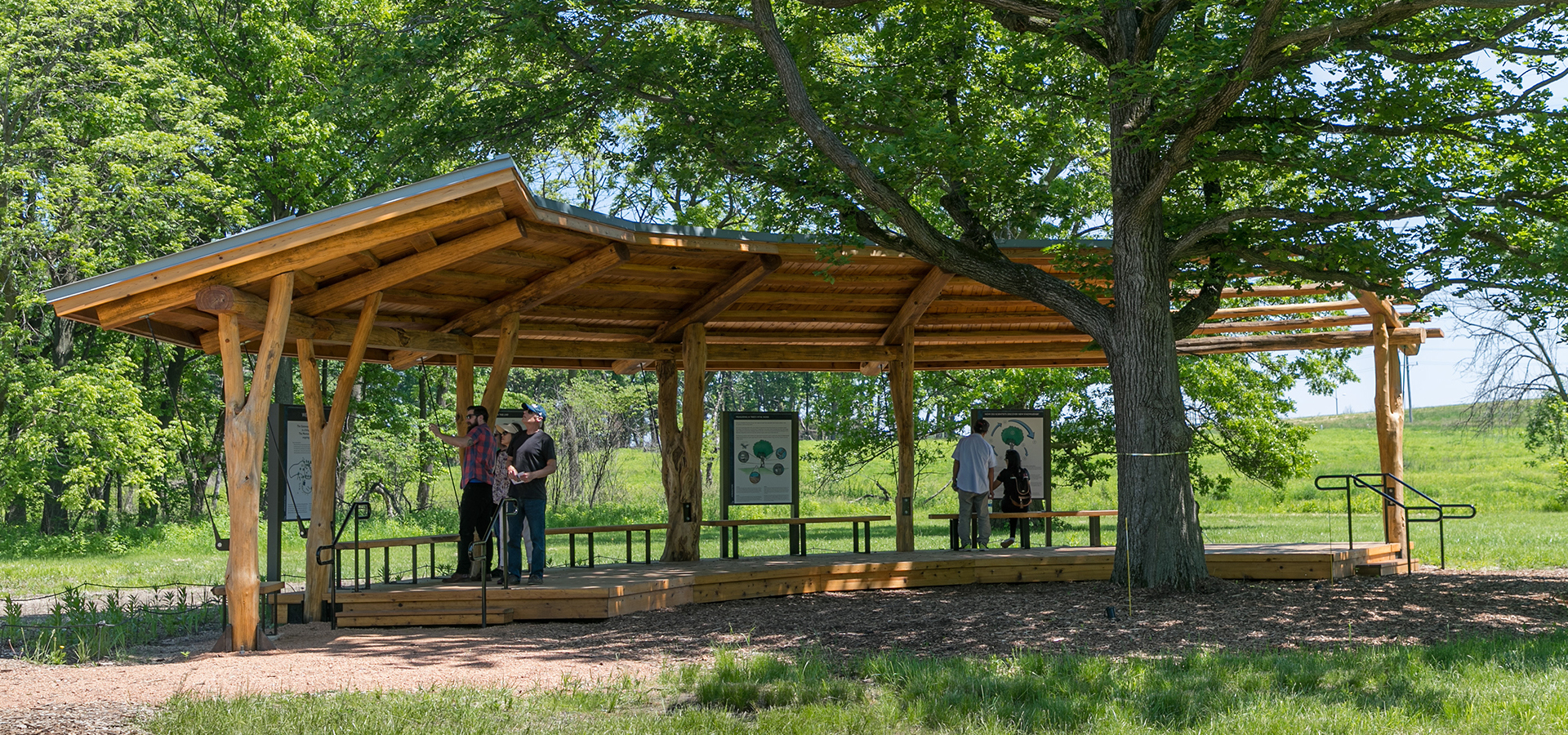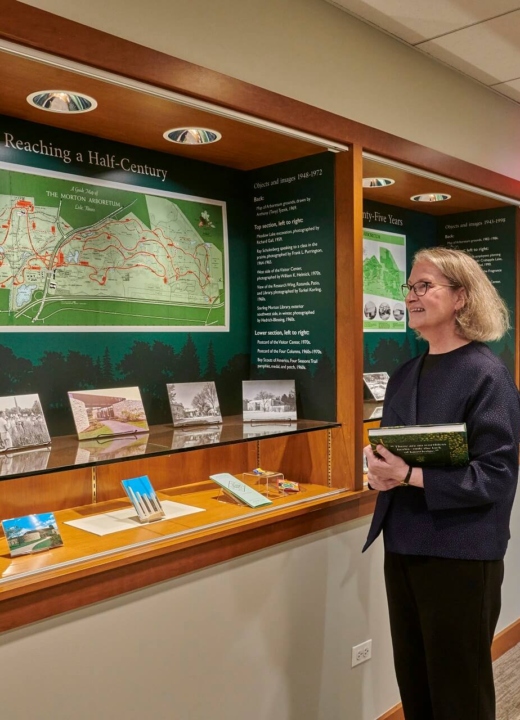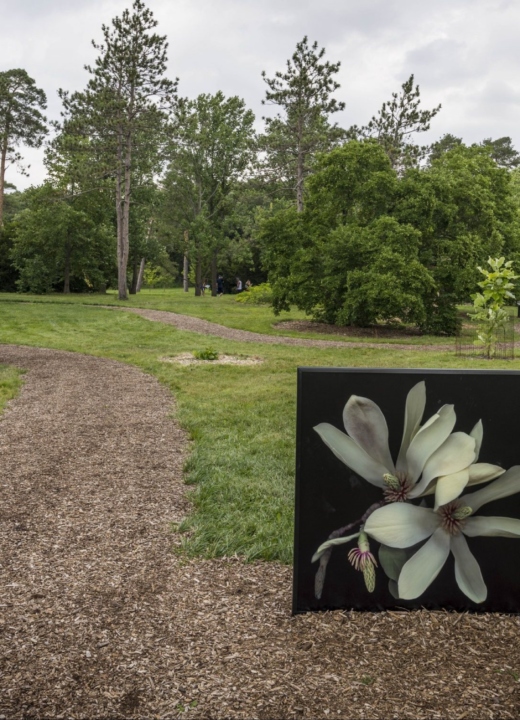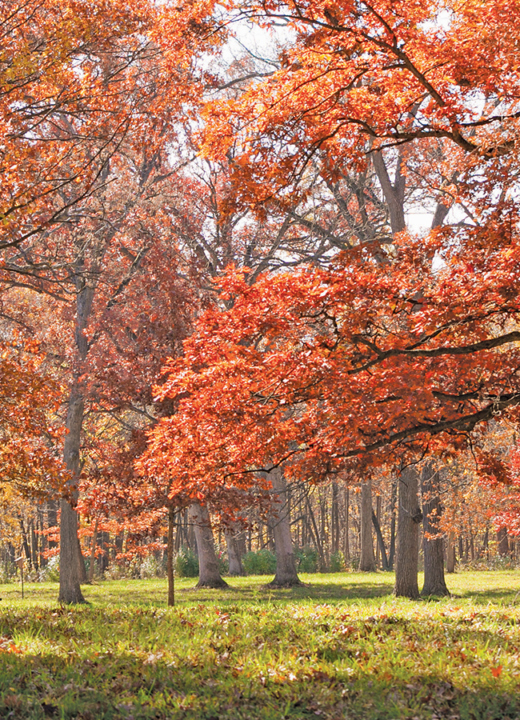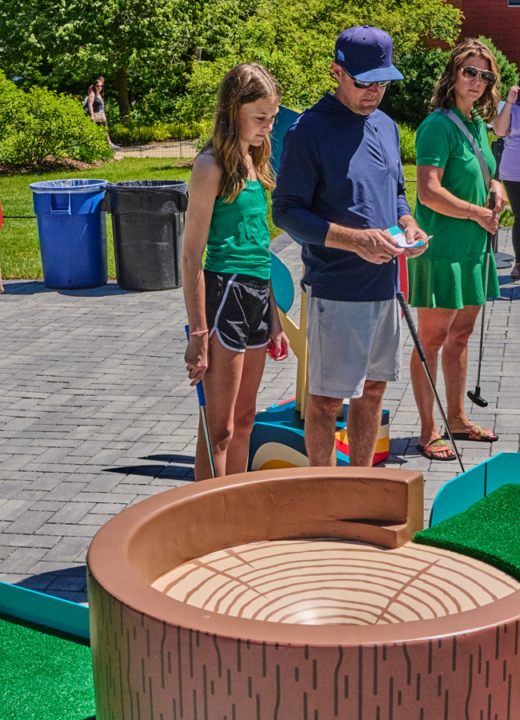The Gateway to Tree Science is an interactive outdoor exhibit designed to bring The Morton Arboretum’s tree science and research to life. The exhibit provides insightful information and ongoing, real-time demonstrations designed to educate professionals, homeowners, and others on best practices for tree care as well as to inspire students and future tree scientists with practical and timely advice drawn from decades of research at the Arboretum.
Living trees and informative panels along a half-mile, wood-chipped trail highlight the biology and function of trees, the challenges that trees face in cities and suburbs, the plight of endangered trees, and the research taking place at the Arboretum for a greener, healthier, more beautiful world where people and trees thrive together.
The Gateway to Tree Science path begins with an overview of the site, where guests can learn about the basics of tree biology and scientific processes while observing ongoing demonstrations with living trees. Various sections will center on different aspects of tree care and expertise:
- Choosing the Right Tree communicates the importance of selecting a tree based on its suitability for a given site, taking into account factors such as the species’ tolerance of wet or dry conditions, and the width and height of the tree at maturity. Also addressed are trees’ ecosystem benefits, such as providing food and habitat to wildlife, and helping to prevent soil erosion.
- Caring for Urban Trees details the many ways people can care for the trees in cities and suburbs, from the long-term benefits of proper pruning to the use of cables to hold together the overextended branches of large trees.
- Addressing the Challenges of Urban Soils provides more insight into the unique issues faced by trees in built environments, including poor soil quality and the stress trees experience when transplanted from a nursery to an urban setting.
- Cultivating Resilient Trees showcases cultivars and hybrid trees, with examples of selections from the plant introduction program Chicagoland Grows® along the route.
- Laying the Groundwork gives guests a closer look at the Arboretum’s current research and how the institution is protecting threatened and endangered trees worldwide, with conservation efforts guided, in part, by findings from scientists, such as those mapping genetic connections in oak trees across the globe.
The exhibit site, near the Arboretum’s internationally recognized Oak Collection, was developed around existing large trees and features over 170 newly planted trees and shrubs. The Gateway to Tree Science trail begins at the south end of Parking Lot 8 on the East Side of the Arboretum and is included with Arboretum admission.
